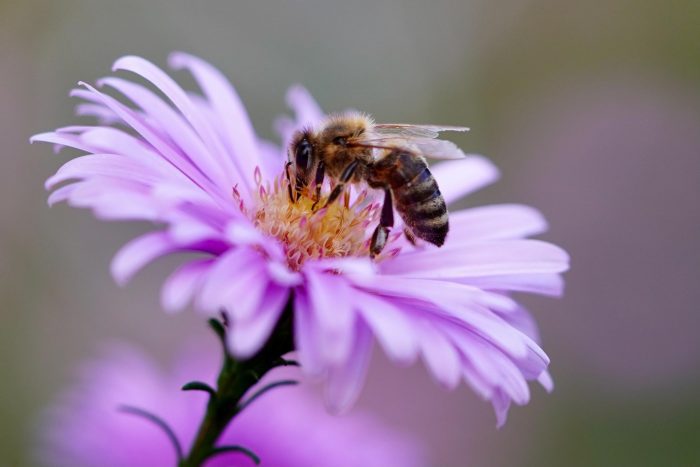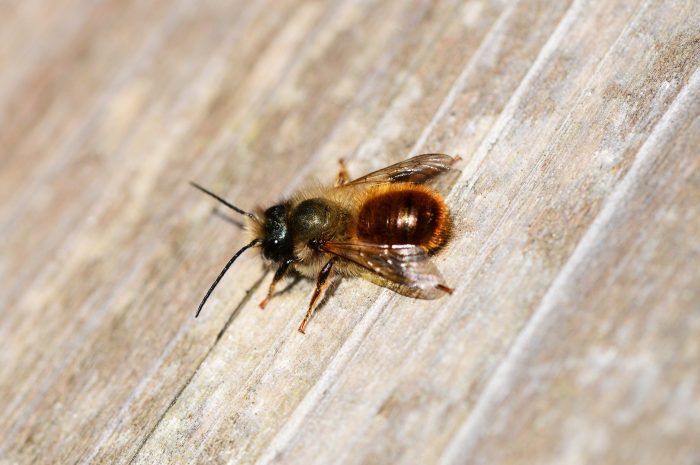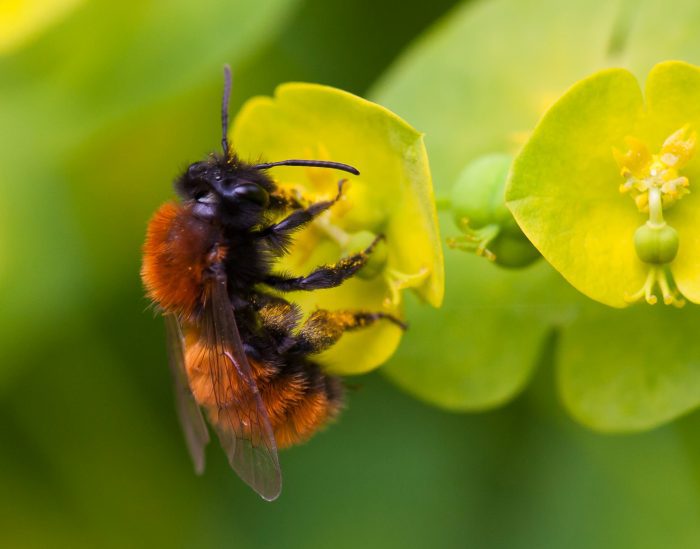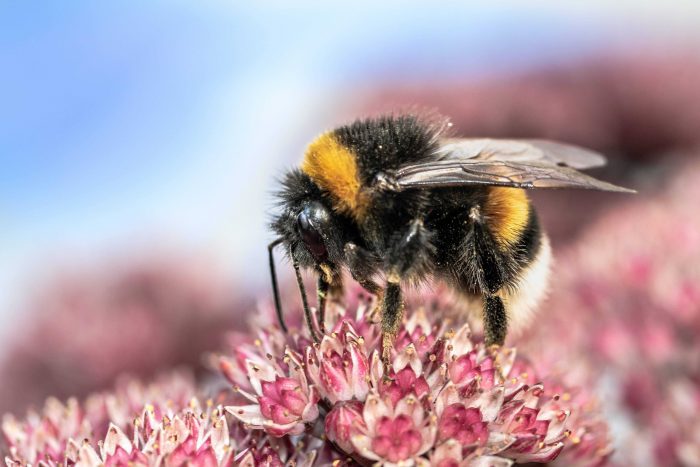

Bee. Credit: manya_m via Pixabay
There are two Bee Boxes installed in the Centre grounds. Our boxes look different to typical hives as we do not harvest honey from our resident bees. The boxes here at the Centre provide a safe undisturbed habitat for the local bee population.
Bees are flying insects that collect nectar and pollen. Bees play an important role in food production because they are the principal pollinators of flowering plants. Without bees many fruits and vegetables would not be produced and many wild flowers would be unable to reproduce.
There are around 270 species of bee in the UK. Over 250 of these species are solitary bees. Solitary bees have their own nest and although they may nest in aggregation each nest is made by a single female. The social bees in the UK are the bumblebees and honeybees. Social bees live in colonies with a queen bee.

Red Mason Bee. Credit: PollyDot via Pixabay
There is just one honey bee species in the UK. Colonies can consist of up to 100,000 bees. The role of the queen bee is to produce eggs and she can lay up to 2,500 per day. The male bees are called ‘drones’ and are responsible for fertilising the queen’s eggs and for protecting the hive. The female ‘worker’ bees build and maintain the hive as well as collect nectar and pollen.

Mason Bee. Credit: naturalengland via openverse CC BY-SA 2.0
Mining bees excavate nest tunnels and cells in the ground with most species preferring light, sandy soils.
The distinctive female Tawny Mining bee has thick reddish-orange hair on its thorax and long orange hair on its abdomen. The males are smaller, thinner and have brown coloured hairs making them harder to distinguish.
Female Ashy Mining bees create nests underground leaving volcano shaped earth piles at the entrance. These entrances can be closed over to protect the nest from rain or predators.
Red Mason bees nest in existing holes and cavities in buildings, particularly liking sunny, south facing walls. They also nest in natural cavities in stems and dead wood. Unlike social bees, the Red Mason bee collects pollen on hairs underneath their abdomen called a pollen brush.
There are twenty-four bumblebee species in the UK. In spring, bumblebee queens search for suitable nest sites. They often like to nest underground but as they cannot collect their own nesting material they make use of old burrows made by small mammals. If nesting above ground they will use places such as compost heaps, long grass or blue tit nest boxes.

Heath Bumble Bee. Credit: Myrians-Fotos via Pixabay
See further details on the Centre’s Bee Boxes >

The information board is kindly sponsored by The Mayor of Ashford’s Charity and International Biodiversity Consultants Ltd
